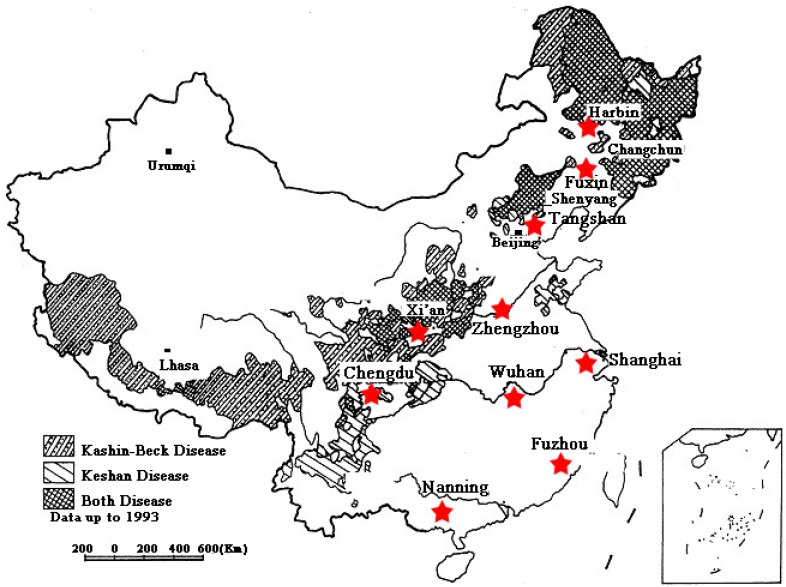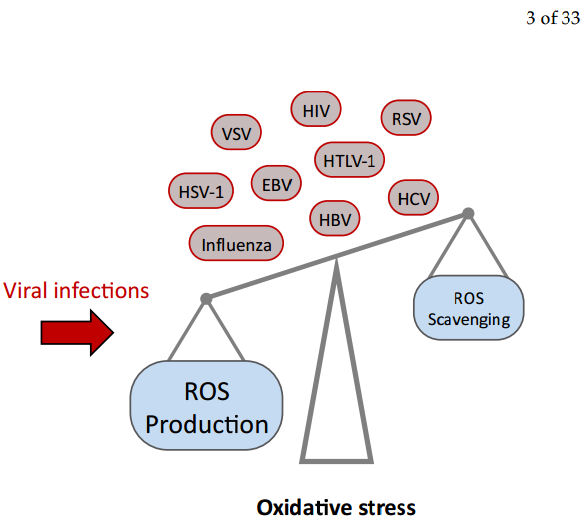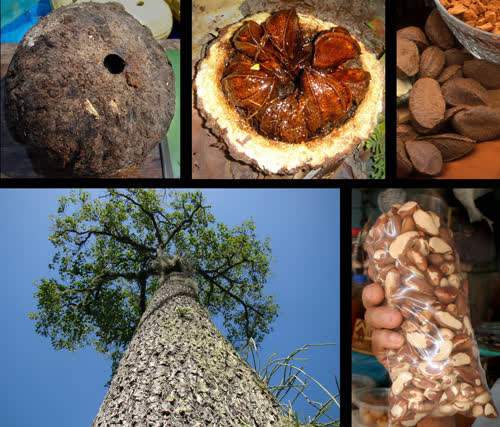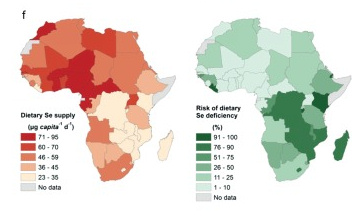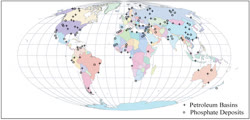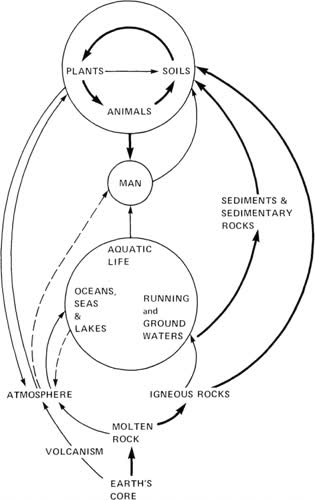|
Selenium and Glutathione Peroxidase Distribution in Bovine Semen and Selenium-75 Retention by the Tissues of the Reproductive Tract in the Bull Selenium-75 retention expressed as cpm/g of tissue was determined for a total of 14 tissues. Epididymis (67,078 ± 4,787 cpm/g) and testis (33,459 ± 783 cpm/g retained the greatest amount of 75Se with the exception of the kidney (105,439 ± 5,936 cpm/g). Among the accessory glands, the prostate (15,927 ± 1,356 cpm/g) and the seminal vesicles (12,491 ± 986 cpm/g) contained the highest levels of 75Se. |
|
Effects of in vitro supplementation with α-tocopherol and selenium on bovine neutrophil functions: implications for resistance to mastitis "These results obtained in vitro may indicate the potential benefits of in vivo supplementation of dairy cows with vitamin E and selenium in terms of enhancing their natural resistance to mastitis." |
|
Enhancing the selenium content of bovine milk through alteration of the form and concentration of selenium in the diet of the dairy cow Since estimated dietary selenium intake in the UK has declined steadily from around 60 µg day−1 in 1975 to 34 µg day−1 in 1997, there is a need to increase selenium intake from staple foods such as milk and milk products. |
|
The Changing Selenium Nutritional Status of Chinese Residents Abstract |
|
Exceptional time response, stability and selectivity in doubly-activated phenyl selenium-based glutathione-selective platform Improvement in fluoroscopic detection methods - 100x improvement in test sensitivity. |
|
Effects of Vitamins A, C and E and Selenium on Immune Response of Broilers to Newcastle Disease (ND) Vaccine "It is recommended that commercial poultry feed producers supplement feeds with higher than the 1994 NRC recommended levels of Vitamins A, C, E and Selenium to ensure better immune responses of birds to vaccination. This may reduce cases of vaccination failure in the country." |
|
New Frontiers in Organoselenium Compounds 188 pages. Limited,but good, preview on Google Books. Posted on Researchgate but only as a mention, no file available.
|
|
Selenium, Selenoproteins and Viral Infection "Selenium is an essential trace element for mammalian redox biology. Numerous epidemiological
studies have revealed an association between selenium deficiencies and the increased risks of
developing several pathologies, including cancers, neurogenerative diseases, cardiovascular disorders
and infectious diseases [1–13]. The ability of selenium supplementation to reverse or reduce these
risks has been reported in many human or animal models"
|
|
Brazil nuts: an effective way to improve selenium status "Selenium functions as a component of several selenoproteins in antioxidant and redox reactions, thyroid hormone metabolism, immune function, and reproduction (1). Marginal selenium status resulting in suboptimal amounts of one or more selenoproteins may be associated with increased risk from a number of conditions, including cancer, cardiovascular disease, altered immune function, male infertility, inflammatory disorders, autoimmune thyroid disease, and viral infection (2). Moreover, there is growing evidence that higher than recommended intakes may confer additional health benefits such as reduction in chronic disease and enhancement of immune function (2, 3). Thus, the argument is strong for augmenting selenium intakes, and interest in foods containing high amounts of selenium or supplements is increasing (4)." Participants were randomly assigned to one of three groups. One group ate two Brazil nuts each day (estimated to provide approx. 100 micrograms Se). A second group took a supplement providing 100 micrograms of selenium as selenomethionine per day, and the third group, who served as controls, were given a placebo pill. Blood levels of selenium and glutathione peroxidase (GPx - a selenium containing enzyme that is one of the body's most important antioxidants) activities were measured at the beginning of the study and at 2, 4, 8, and 12 weeks. By week 12, blood levels of selenium had increased by 64.2%, 61.0% and 7.6%, respectively, in the Brazil nut, selenomethionine, and placebo groups. Plasma levels of GPx increased by 8.3%, 3.4% and -1.2%, and whole blood GPx by 13.2%, 5.3% and 1.9% in the Brazil nut, selenomethionine and placebo groups, respectively. Not only was consumption of two Brazil nuts each day as effective for increasing selenium status and enhancing GPx activity as 100 micrograms of selenomethionine per day, but just one Brazil nut per day would have been sufficient to raise dietary selenium intake to within recommended intake levels for the mineral. |
|
Selenium "toxicity" What happens we some pills are made that are 15x too strong? Bad breath and a tummy ache. |
|
Selenium and Soil
|
|
Traditional and folk remedies containing selenium Selenium has inadvertently been employed in traditional pharmacopoeia as an antiviral agent, most notably in Chinese Astragalus which is in very many traditional Chinese remedies. Not being aware of its antiviral properties it is regarded in America as a pest which in that context it is: "locoweed" as it's called, when grown in areas of high selenium when eaten by farm animals in excessive amounts causes the diseases "blind stagger" and "alkali poisoning" names coined no doubt in the 1800s. |
|
"...cystine, glycine and glutamate, as well as a minute amount of selenium..." We investigated the effects of a specific free-form amino acids formulation on Zika virus replication in two different cell culture model systems, one representative of humans and the other of Old World primates from whom Zika virus was first isolated. Here we present data demonstrating that the formulation of the specific free-form amino acid (FFAAP), comprising cystine, glycine, and a glutamate source, along with a minute concentration of selenium inhibited Zika virus replication by up to 90% with an ED90 (effective dose at which 90% of a dose of Zika virus was inhibited) of 2.5 mM in human cells and 4 mM Vero cells. The ED90 concentration of precursors was innocuous for uninfected cells, but resulted in reduced Zika virus replication by up to 90% at 2–5 mM concentrations in nonhuman primate cells and at 1–3 mM concentration in human placental cells.
|
|
Selenium in Nutrition: Revised Edition.
In this Page |
